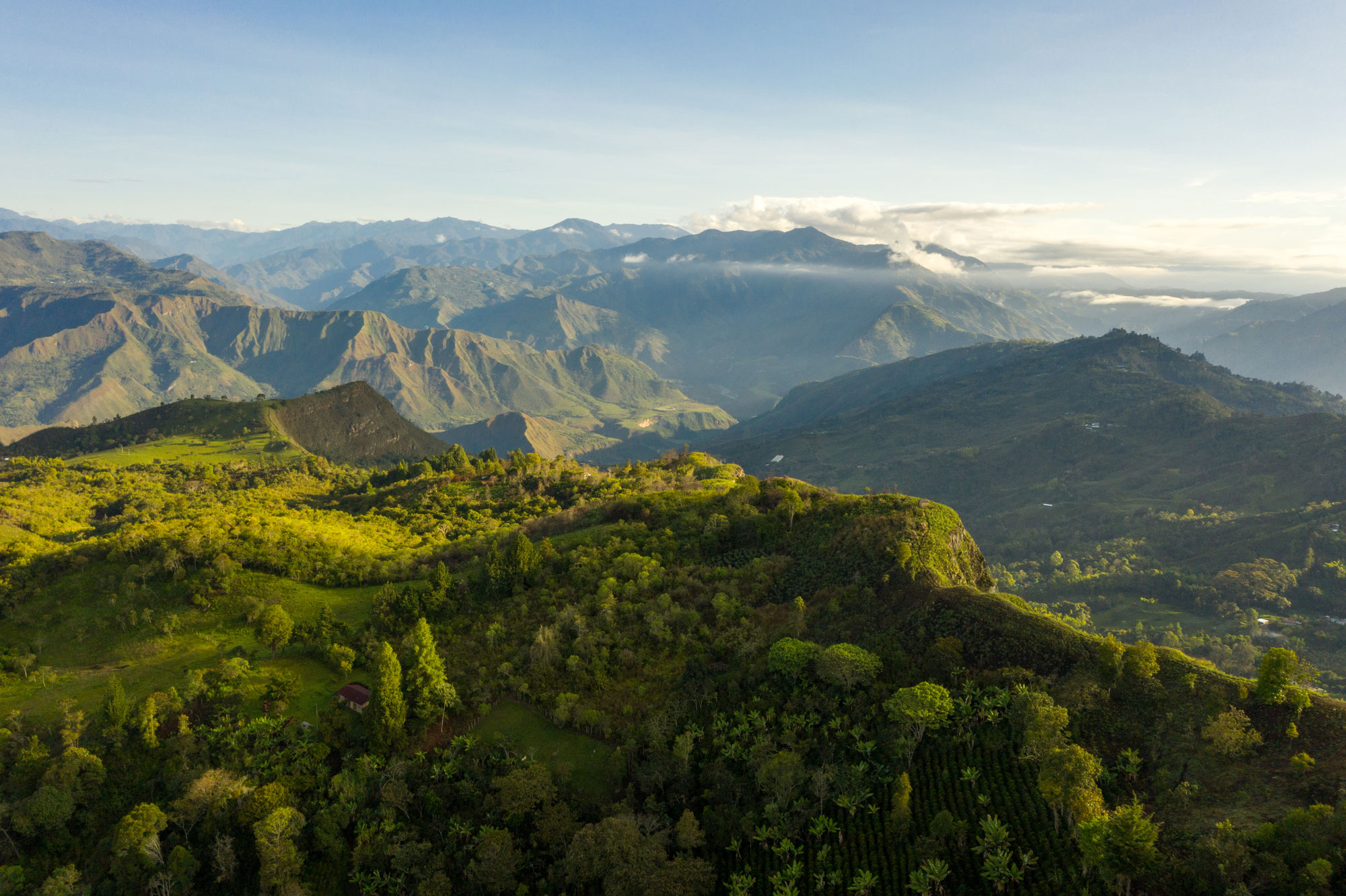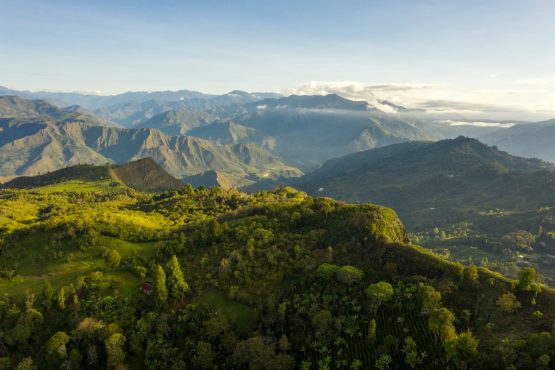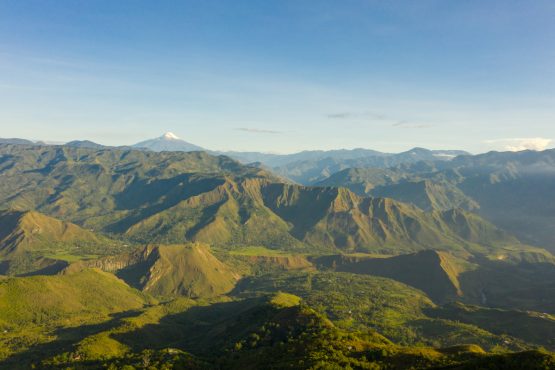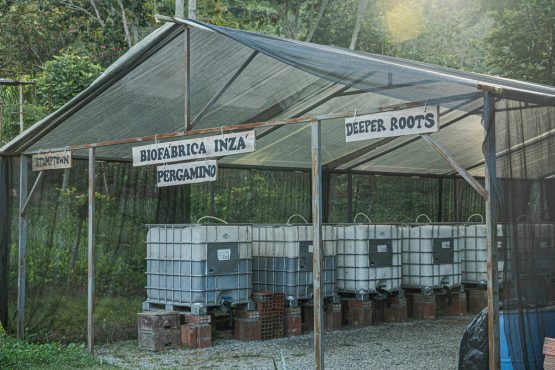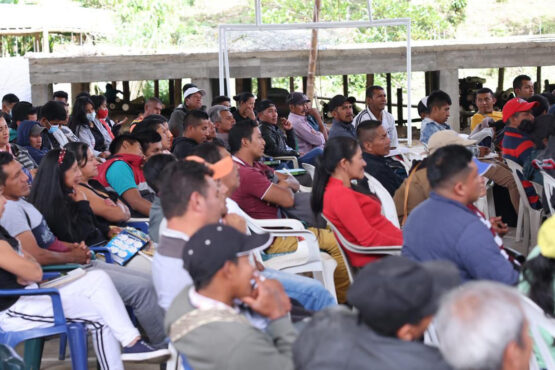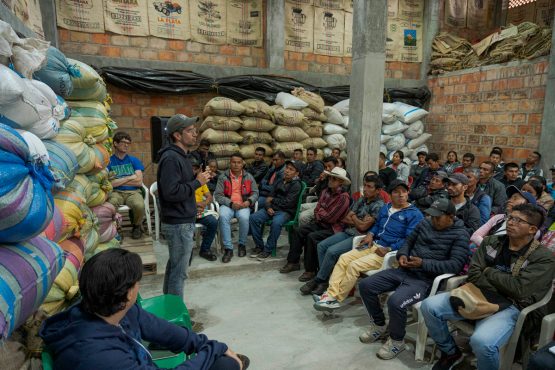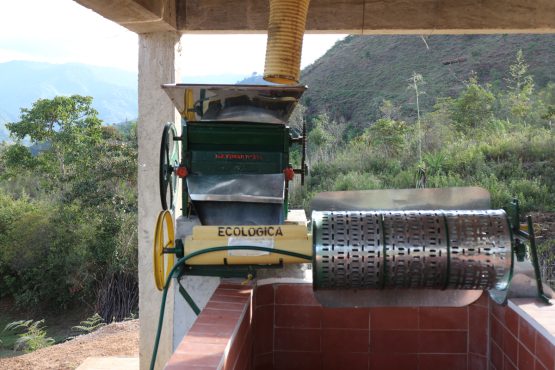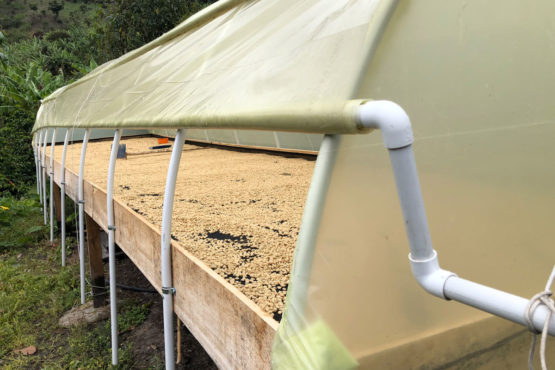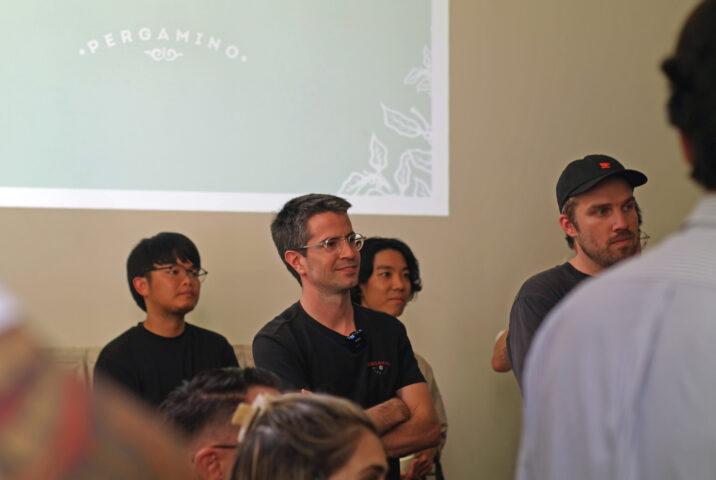San Antonio Decaf
Creamy and well-structured, with orange blossom florals. Stewed apple, caramel and almond nougat.
This coffee was produced by nine smallholder coffee producers from the region surrounding the small town of San Antonio, located within the municipality of Inzá in the state of Cauca, Colombia.
The town of San Antonio has breathtaking views of Colombia’s highest volcano, Nevado del Huila, which sits at the point where the states of Huila, Tolima and Cauca meet. The rich, volcanic soil of the region is ideal for agriculture and contributes to the excellent cup quality of coffees grown and processed here. Farms in the area tend to be small – on average just one hectare – and either have their own micro-beneficio (wet mill) or share one with family or neighbours. Farmers grow a mixture of Caturra trees along with newer varieties Castillo and Colombia, which have proven more resistant to leaf rust. The region’s cool overnight temperatures result in dense beans, which are notable for their sweetness and complexity. The lower temperatures and high rainfall experienced here also affect processing, making longer ferment and drying times necessary.
This coffee was sourced via the influential Pillimué family, who work hand in hand with our supply partners, Pergamino, as their local logistical operators in San Antonio. The family has a longstanding presence in the area, having farmed coffee here across three generations. They also keep the town’s general store and have built an adjacent warehouse and QC lab, which acts as a receiving point for over 200 local producers who deliver coffee to them.
During the harvest, local farmers deliver small lots (around 100-150kg) of dried parchment to the Pillimué family’s warehouse and lab every 2-3 weeks. Upon delivery, a sample of the dried parchment is milled and assessed for physical attributes, including uniformity of size, presence of defects, moisture content and seed to hull ratio. If the coffee passes the physical assessment, it is accepted and the farmer receives their first payment for the coffee, calculated by the weight delivered and a base rate related to the physical quality of the parchment.
Samples of the coffees are then cupped by a team trained by Pergamino and, if selected, sent weekly to their QC lab in Medellín where they are further assessed by an expert team of cuppers. Each lot is carefully evaluated and, based on the cup score and profile, the coffee is sorted into different grades of quality and combined into exportable sized lots. Feedback on each lot is relayed back to the producer and after it has sold, a second payment is made to them according to the premium the coffee attracted.
The team at Pergamino cups through hundreds of small lots at their QC lab in Medellin, to select the coffees that are blended together into this special regional lot. The coffees included were chosen for their outstanding cup profile and distinct regional characteristics.
Read more about our Colombian export partner, Pergamino, here.
ABOUT INZÁ
The municipality of Inzá is located in the corner Cauca state, bordering with Tolima and Huila and looking out to the west over the Pacific Ocean. This region has excellent conditions for growing high-quality coffee, with high elevations and rich volcanic soil. The plateau has a very stable climate year-round thanks to its proximity to the equator and the surrounding mountains, which protect the coffee against the humidity of the Pacific Ocean and the trade winds from the south. This region is an important source of water and wildlife for Colombia, in addition to being prime coffee-growing land.
Inzá is the traditional home of the Nasa (or Páez) people, one of Colombia’s largest indigenous groups. During the Spanish invasion of Colombia, many of the Nasa were able to avoid bloodshed by escaping to the rugged hills and high plateaus of the Andes Mountains where the Spaniards were unable to pursue them. Today, the Nasa economy relies on agriculture, and society is organised into tight knit farming communities who distribute duties equitably under the guidance of cabildos, or locally elected councils. Like many indigenous groups across Latin America, the Nasa have spent decades lobbying for the return of their land rights, finding success in recent years. Their struggle has led to legal recognition of the fundamental rights of indigenous peoples, including recognition of the autonomy of their communal indigenous lands in the 1991 Colombian Constitution.
Coffee from Cauca has historically been very difficult to access due to the region’s isolation and instability. For many years this part of Colombia was under the control of Colombia’s notorious rebel group, the FARC, and as a result, it was unsafe and violent. Since 2012, safe access to this region has been possible as a result of peace talks between the national government and the rebels. Thanks to these efforts, more and more stunning coffees from small producers in the region have become accessible to international buyers.
Our export partners for this coffee, Pergamino, have worked hard commercialise specialty-grade coffee throughout Cauca, and are now able to source some outstanding coffees from very dedicated producers. They work closely with the producers to give them feedback on their coffees (provided by Pergamino’s expert team of cuppers) and provide top up payments when the coffee is sold at a higher premium.
Head here to learn more about the work of Pergamino.
HOW THIS COFFEE WAS PROCESSED
The coffees in this lot were selectively hand-harvested, with most labour being provided by the farmers and their families. They were processed using the washed method at each farm’s ‘micro-beneficio’ (mill).
The coffee was pulped using a small manual or electric pulper and then placed into a fermentation tank, where it was fermented for around 48 hours (depending on the weather and the farm’s location) and then washed using clean water from nearby rivers and streams.
The coffee was then carefully dried (over 10–18 days) on parabolic beds, which are constructed a bit like a ‘hoop house’ greenhouse, and act to protect the coffee from the rain and prevent condensation dripping back onto the drying beans. The greenhouses are constructed out of plastic sheets and have adjustable walls to help with airflow, and temperature control to ensure the coffee can dry slowly and evenly.
Once dry, each individual coffee was delivered to the Pillimué family’s warehouse, where it was cupped and graded. It was then sent to Pergamino’s warehouse in Medellín, where coffees were blended to create this regional lot, and then it was rested in parchment until it was ready for export.
ABOUT THE ETHYL ACETATE PROCESS
For this decaffeinated lot, Pergamino has enlisted the services of Colombia’s only decaffeination plant, Descafecol, located in the city of Manizales, in the western state of Caldas. The company uses ethyl acetate to decaffeinate coffees, a natural component derived from fermented sugarcane that is also found in certain fruits (especially when they are very ripe). The process begins when milled green coffee is placed in tanks and steamed to remove the silver skin. The tanks are then filled with hot water to soften and open up the seeds’ cell membranes, ‘loosening’ their caffeine compounds. An ethyl acetate solution is then introduced to the coffee and cycled through several times, with increasingly more caffeine bonding to the chemical compound the longer it is exposed.
Descafecol’s goal is to remove as much as 99.9% of the beans’ caffeine. Once they have achieved this target, the coffee seeds are gently dehydrated in vacuum dryers, until the desired moisture content of 11% is reached. The slow nature of this process has one key benefit: the coffee’s cell structure is only marginally compromised and sugar is retained, meaning beans remain dense and roast similarly to their non-decaffeinated counterparts. We were extremely impressed with Descafecol’s plant while touring the site in November 2024, when we were introduced to the team and saw first-hand the careful handling and quality control of their practices — head here to listen to Fleur talk about her visit to the plant, via our podcast The Green Delivery.
